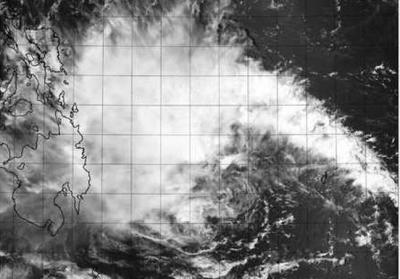NASA-NOAA's Suomi NPP satellite passed over the remnants of Tropical Depression Peipah on April 9 as the storm slowly approached the Philippines from the east. According to the Joint Typhoon Warning Center, Peipah is now not expected to make landfall in eastern Visayas until April 12.
The Visible Infrared Imaging Radiometer Suite or VIIRS instrument aboard Suomi NPP captured a visible, high-resolution image of the storm as it continued moving through the Philippine Sea. The storm appeared disorganized in the image, and the center was difficult to pinpoint on the visible imagery.
VIIRS is a scanning radiometer that collects visible and infrared imagery and radiometric measurements. VIIRS data is used to measure cloud and aerosol properties, ocean color, sea and land surface temperature, ice motion and temperature, fires, and Earth's albedo.
Using animated multispectral satellite imagery, the Joint Typhoon Warning Center observed weakening deep convection (thunderstorms were not developing as quickly) within a broad low-level circulation center.

On April 9 at 04:10 UTC/12:10 a.m. EDT, the VIIRS instrument aboard NASA-NOAA's Suomi NPP satellite captured this image of Tropical Depression Peipah slowly approaching the eastern Philippines.
(Photo Credit: Image : NRL/NASA/NOAA)
An image from the Advanced Microwave Sounding Unit (AMSU) showed there is a curved band of thunderstorms over the northern semi-circle. There's also a weak band of thunderstorms over the southwester quadrant of the storm. The AMSU-A instrument flies aboard NASA's Aqua satellite and is a 15-channel microwave sounder instrument designed primarily to obtain temperatures in the upper atmosphere (especially the stratosphere)
Tropical depression Peipah's maximum sustained winds were near 25 knots/28.7 mph/46.3 kph on April 8 at 1500 UTC/11 a.m. EDT. Peipah is centered near 9.1 north and 129.7 east, or 616 nautical miles/709 miles/1,141 km southeast of Manila, Philippines. The depression slowed down and was moving to the north-northwest at 5 knots/5.7 mph/9.2 kph.
Peipah is in a weak steering environment, that means there are no strong high or low pressure areas nearby to push it one way or another, so it is expected to track slowly in a northwesterly direction for the next several days.
Source: NASA/Goddard Space Flight Center